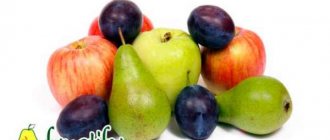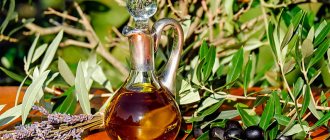We all love fruits, because they are not only tasty, but also incredibly healthy. They contain a lot of vitamins and nutrients, they have antiviral, immunostimulating and antiallergic properties.
Proponents of a healthy diet claim that by eating an apple a day, you can forget about doctors. But what about those who carefully monitor their figure and count every calorie? After all, many fruits are quite high in calories.
Calorie content of fruits
The calorie content of fruits is due to the high content of carbohydrates, tannins, organic acids, essential oils, vitamins and minerals. Of the carbohydrates, they most often contain fructose, glucose and sucrose - safe sugar substitutes.
The calorie content of fruits can vary quite widely. It can differ not only in different fruits, but also among different varieties and individual fruits of the same species. The most high-calorie bananas are bananas, 100 g of which contain 90 calories. They are followed by grapes (70 kcal), mango (67 kcal), persimmon (62 kcal). The most “harmless” for the figure are apples (45 kcal), apricots (41 kcal), oranges (37 kcal), grapefruits (35 kcal). Well, the leader in calorie content is avocado (183 kcal). However, few people consider it a fruit, and they certainly don’t want to feast on it in large quantities. Although…
Is it possible for those who count every calorie to eat fruit? In fact, nutritionists advise that you definitely include fruits in your diet, and also advise trying a fruit diet and fasting days. By eating only fruits, you can easily lose weight. Of course, provided that you do not eat kilograms of high-calorie bananas and fill fruit desserts with whipped cream.
For weight loss purposes, it is best to consume citrus fruits. They have low calorie content and improve metabolism in the body, which often causes excess weight. Flavonoids contained in grapefruits, lemons, tangerines and oranges perfectly burn fat and saturate the body with vitamins. Also, the “worst enemies” of excess fat are watermelons and melons, which help cleanse the body.
Do not forget that fruit is different from fruit. Some of them, on the contrary, promote fat accumulation due to the large amount of fructose. This applies to bananas, grapes and dried fruits. If you are trying to lose weight, it is better to avoid them.
Nutritionists advise having fasting days twice a week, during which you should eat only low-calorie fruits. You need to eat no more than 1200-1500 calories per day, this will allow you to lose up to 5 kg per week. You can have apple, pear, orange, pineapple or other fruit days by choosing low-calorie fruits to suit your taste. Most importantly, do not eat canned fruits and dried fruits. They are too high in calories!
What affects the calorie content of fresh fruit?
Different fruits have different calorie levels. It directly depends on the amount of liquid and sugar in the fruit. The more liquid a fruit contains, the less sugar it contains. Fruits with juicy pulp are lower in calories. For example, oranges, watermelon, grapefruits. Fruits with dense pulp have higher calorie content. These are bananas, avocados, persimmons.
Dried fruits, unlike fresh fruits, contain significantly more calories. This is explained by the fact that when dried, the fruits begin to lose moisture, and the amount of sugar increases. However, do not neglect dried fruit compote. It will perfectly quench your thirst and replenish your vitamin reserves.
When canned, fruits lose a significant amount of nutrients and acquire excess sugar due to sweet syrup.
Don't forget about the glycemic level of fruits. This is an indicator of the effect of carbohydrates on changes in blood sugar levels. It shows how quickly sugar is absorbed by the body. The higher it is, the more calories turn into extra pounds.
This does not mean that fruits with a high level of calories are harmful and their consumption is prohibited by nutritionists. On the contrary, they consist of a large amount of nutrients and fiber. Their consumption just needs to be balanced with other lower-calorie foods.
It is preferable to eat high-calorie fruits in the first half of the day. It is advisable to use them as a sweet snack.
There are fruits with “zero” (negative) calorie content. This means that they contain as many calories as the body spends on digesting them. But you shouldn’t get carried away with such fruits. Eating such foods in large quantities reduces the body’s activity, disrupts intestinal function, and stretches the stomach. With their help, you can arrange fasting days.
TOP 5 fruits for losing weight
Apples (45 calories)
In its raw form it provokes the synthesis of hydrochloric acid, and therefore you need to eat baked apples. They saturate the stomach and do not harm the mucous membrane.
Grapefruit (35 calories)
Low-calorie citrus with a low glycemic index. The fruit contains enough fiber.
Orange (37 calories)
Citrus contains little fructose, but a high amount of dietary fiber. For a healthy snack, orange should be consumed raw.
Raspberries (40 calories)
The berry is enriched with calcium, potassium, ascorbic and folic acids. Raspberries are an effective fat destroyer.
Watermelon (38 calories)
A unique berry that cleanses the kidneys and liver.
Calorie content of berries. Calorie table per 100 grams
With the first appearance of berries, a person just wants to try them, and this is no coincidence. This is because during the cold period the body is depleted and requires useful microelements, of which there are many in a variety of berries. This is not only healthy, but also an incredibly tasty treat. The berries are incredibly popular fresh, and in some cases dried.
Berries contain a lot of:
- vitamins
- fiber
- antioxidants
- minerals
The unique effect of berries on the human body is that they are able to reduce all oxidation processes. It is the expected processes that destroy the human body, wearing it out and causing it to age. Berries give youth and “freshness”.
Berries must be an important component of the human diet. It is useful to eat them exclusively fresh, and some dried berries are an excellent substitute for desserts. Berries go well with fermented milk products, as well as in fruit salads and in combination with granola.
benefits of berries
Of course, the berries that have just been picked from the bush can be called the most delicious. It’s not uncommon for berries to be frozen so they can be enjoyed all year round. Frozen berries are also tasty, but lose half of their beneficial properties.
As already mentioned, berries are real antioxidants. And all this thanks to the presence in their composition:
- vitamin C - responsible for collagen production
- anthocyanin - reduces inflammation
- quercetin - slows down the aging process
There is a secret that allows you to find out how many useful substances and antioxidants are in a berry - its color. The brighter the berry, the richer its taste and vitamin composition.
Calorie table for berries per 100 grams:
| Name of the berry | Squirrels | Fats | Carbohydrates | Calorie content per 100 grams |
| Watermelon | 0,7 | 0,2 | 8,8 | 40 |
| Cherry | 0,8 | 0,5 | 10,3 | 49 |
| Strawberry | 0,8 | 0,4 | 6,3 | 32 |
| Raspberries | 0,8 | 0,3 | 8,3 | 39 |
| Currant | 1 | 0,2 | 7,3 | 35 |
| Blueberry | 1,1 | 0,6 | 8,4 | 41 |
| Cherries | 1,2 | 0,4 | 10,6 | 50 |
| Gooseberry | 0,7 | 0,2 | 9,1 | 41 |
| Cranberry | 0,5 | — | 6,3 | 34 |
| Blueberry | 1 | 0,1 | 7,7 | 34 |
| Sea buckthorn | 0,9 | — | 5 | 52 |
| Rowan | 1.4 | — | 8,6 | 46 |
| Rose hip | 1,6 | — | 24 | 101 |
| dogwood | 0,9 | 0,1 | 46 | 209 |
| Cowberry | 1 | — | 10 | 43 |
| Strawberries | 1 | — | 11 | 34 |
| Blackberry | 2 | — | 6 | 31 |
| Mulberry | 1 | — | 14 | 52 |
Berries are a source of folic acid, which is so necessary for women's health. In addition, it takes care of the human cardiovascular system. Fiber, which is abundant in berries, improves bowel movements and improves the functioning of the gastrointestinal tract. Also, folic acid is what is responsible for the production of serotonin in the body - the “happiness” hormone. Regular consumption of berries prevents depression.
TOP 5 fruits for weight gain
Papaya (43 calories)
The exotic fruit can be purchased from us in supermarkets.
Pineapple (50 calories)
Thanks to a large dose of bromelain, it improves digestive processes. After workouts, it helps speed up the absorption of protein.
Kiwi (61 calories)
Contains vitamins D, A, E, which stimulate metabolism.
Banana (89 calories)
A source of easily digestible sugar. Bananas are best eaten immediately after intense training.
Avocado (160 calories)
The most high-calorie fruit that is added to salads.
Calorie content of berries
The range of berries available and offered in markets and stores is very large and rich. Their average calorie content according to the tables is about 60 kcal per 100 g fresh.
The most high-calorie berries
The most high-calorie types of berries include:
- sea buckthorn - per 100 g the energy value is 81 calories; helps cleanse the body of harmful cholesterol and reduce blood pressure, restore damaged cell membranes;
- grapes - from 53 to 79 calories depending on color and type. The dark blue variety will have the highest energy value; white grapes are lighter. It is best to eat high-calorie grapes with both skin and seeds. This is a useful find for people with heart problems, as well as those with anemia and asthma;
- cherry (about 50 calories) helps remove toxins from the body, quenches thirst, but has contraindications;
- blueberries - energy value 42-44 calories. This is the best high-calorie product for humans, helping to maintain vision, helps reduce inflammatory processes in the body, and contains a huge amount of vitamin C. 100 g of blueberries contains the daily requirement of this vitamin;
- raspberries - 42 calories. Compared to other berries, raspberries contain the most manganese and zinc, are a natural antipyretic, break down fats and strengthen the walls of blood vessels.
Also among the high-calorie fruits are cherry plum, gooseberry and cherry.
Video
The lowest calorie berries
The lowest-calorie berries are presented in the table in descending order:
- blackberries - 30-35 calories. Rich in copper, zinc, minerals and vitamins, normalizes blood clotting and ensures protein synthesis;
- strawberries - 33 calories. Relieves inflammation in the body, improves vision, improves mood, is a natural antioxidant, suitable for people with heart problems;
- blueberries - 32 calories. It is also the strongest natural antioxidant, like blueberries. Lowers blood sugar levels, useful for type 2 diabetes;
- Cranberries have 27 calories. Cranberries contain nutrients that effectively fight bad cholesterol. Cranberry is an excellent medicine for infectious diseases of the genitourinary system, diarrhea, gastrointestinal problems and wounds.
This category also includes all types of currants, lingonberries, strawberries and blueberries. When fresh, the energy value of the fruits in the table does not exceed 40 calories per 100 g.
Video
Those people who have firmly decided to lose weight or gain muscle mass definitely need a table to compare the calorie content of berries and fruits. Each berry or fruit is useful in its own way. But in order for the body to feel this, it is necessary to ensure their proper use. To avoid fermentation in the stomach, you do not need to eat ripe, juicy fruits immediately after a meal. It is best to set aside time to enjoy them 30-40 minutes before meals.











